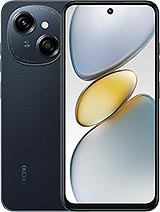Oppo Reno13 Pro alternatives
Tap above to see alternatives.
Redmi 13C 4G alternatives
Tap above to see alternatives.
Oppo Reno13 Pro

Oppo Reno13 Pro
-
Dimensity 8350
4 nm
-
5800 mAh
80W
-
6.83"
1272 x 2800 pixels
-
50 MP
4K@30/60fps
1x3.35 GHz Cortex-A715
3x3.20 GHz Cortex-A715
4x2.20 GHz Cortex-A510
2x2.0 GHz Cortex-A75
6x1.8 GHz Cortex-A55
12GB 512GB (UFS 3.1)
6GB 128GB (eMMC 5.1)
8GB 128GB (eMMC 5.1)
4GB 256GB (eMMC 5.1)
8GB 256GB (eMMC 5.1)
f/1.8, 24mm (wide), 1/1.56", 1.0µm, multi-directional PDAF, OIS
50 MP
f/2.8, 85mm (telephoto), PDAF, OIS, 3.5x optical zoom
8 MP
f/2.2, 15mm, 116˚ (ultrawide), 1/4.0", 1.12µm
f/1.8, 28mm (wide), PDAF
2 MP
f/2.4, (macro)
0.08 MP
(auxiliary lens)
1080p@30/60/120fps, gyro-EIS
f/2.0, 21mm (wide), AF
f/2.0
1080p@30/60fps, gyro-EIS
SIM1: Nano, SIM2: Nano
SIM1: Nano, SIM2: Nano
FDD: N1, N3, N5, N8, N28
TDD: N41, N77, N78
FDD: N1, N3, N5, N8, N28
TDD: N41, N77, N78
In this comparison, the Oppo Reno13 Pro with the Mediatek Dimensity 8350 (4nm) performs better than the Redmi 13C 4G with the Mediatek Helio G85 (12nm), thanks to its more efficient chipset.
The Oppo Reno13 Pro offers 3 years of OS updates, while the Redmi 13C 4G provides 2 years. These phones will receive the same duration of security updates.
Oppo Reno13 Pro has a superior AMOLED display, while Redmi 13C 4G uses an LCD panel. Moreover, it offers a higher 120 Hz refresh rate for smoother scrolling. Oppo Reno13 Pro also has a brighter display with 1200 nits, improving outdoor visibility. Notably, Oppo Reno13 Pro has a higher resolution display, resulting in sharper visuals.
Oppo Reno13 Pro has a larger 5800 mAh battery for longer usage. Oppo Reno13 Pro supports faster wired charging at 80W. Oppo Reno13 Pro supports wireless charging at 50W, while Redmi 13C 4G lacks this feature.
Oppo Reno13 Pro has an IP68 rating, while Redmi 13C 4G lacks official water and dust resistance.











